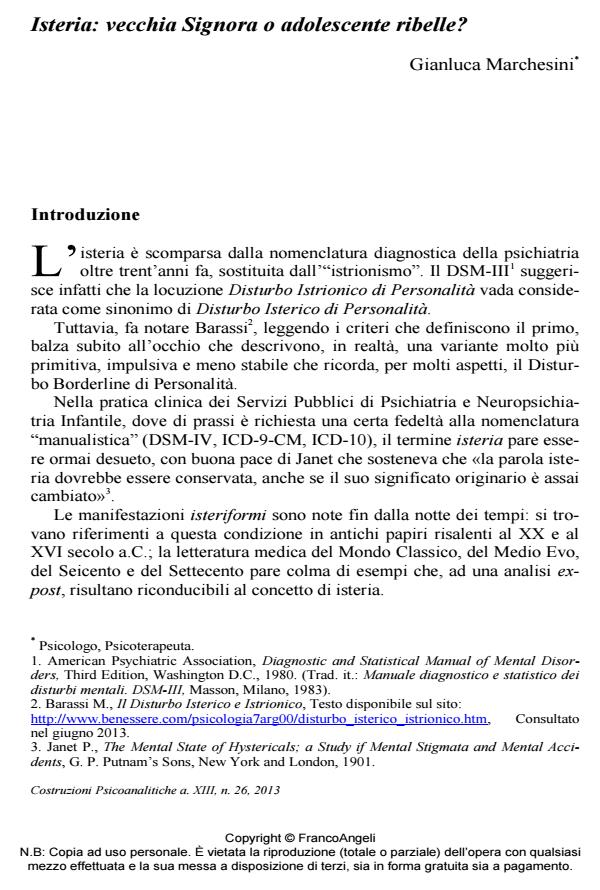Isteria: vecchia Signora o adolescente ribelle?
Journal title COSTRUZIONI PSICOANALITICHE
Author/s Gianluca Marchesini
Publishing Year 2013 Issue 2013/26
Language Italian Pages 15 P. 83-97 File size 269 KB
DOI 10.3280/COST2013-026005
DOI is like a bar code for intellectual property: to have more infomation
click here
Below, you can see the article first page
If you want to buy this article in PDF format, you can do it, following the instructions to buy download credits

FrancoAngeli is member of Publishers International Linking Association, Inc (PILA), a not-for-profit association which run the CrossRef service enabling links to and from online scholarly content.
The term hysteria disappeared from the diagnostic nomenclature about 30 years ago, and was replaced with histrionics. However this new term seems to define more impulsive and less stable clinical cases that are rather similar to Borderline Personality Disorder. In this article, the author argues that the hysteria has not disappeared, but has taken on a new meaning due to the transformations of social contexts and nosographical models. He puts forward the theory that the hysterical and histrionic disorder are located on a continuum of severity that runs along the Freudian distinction between neurosis and psychosis. Echoing the recent studies of different Italian authors, two different forms of hysteria are described that would conserve certain common etiopathogenetic characteristics, but which differ in the level of regression and fixation to different phases of psychosexual development of the child.
Keywords: Hysteria, histrionic, passivity, seduction, regression, anal, oral
Gianluca Marchesini, Isteria: vecchia Signora o adolescente ribelle? in "COSTRUZIONI PSICOANALITICHE" 26/2013, pp 83-97, DOI: 10.3280/COST2013-026005